COBS News archive
Arecibo Radar Returns with Asteroid Phaethon Images
January 08, 2018

NASA Invests in Concept Development for Missions to Comet, Saturn Moon Titan
January 08, 2018

Alien object 'Oumuama was a natural body visiting from another solar system
December 20, 2017
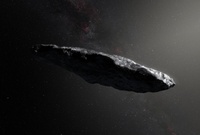
New CCD camera and chip keys added
December 20, 2017
NASA telescope studies quirky comet 45P
December 06, 2017

When comet 45P zipped past Earth early in 2017, researchers observing from NASA's Infrared Telescope Facility, or IRTF, in Hawai'i gave the long-time trekker a thorough astronomical checkup. The results help fill in crucial details about ices in Jupiter-family comets and reveal that quirky 45P doesn't quite match any comet studied so far.
Return of the comet: 96P spotted by ESA, NASA satellites
November 06, 2017

Sun-gazing missions SOHO and STEREO watched the return of comet 96P/Machholz when it entered their fields of view between Oct. 25-30. It is extremely rare for comets to be seen simultaneously from two different locations in space, and these are the most comprehensive parallel observations ever taken of this comet.
Small Asteroid or Comet 'Visits' from Beyond the Solar System
October 27, 2017
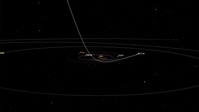
Scientists detect comets outside our solar system
October 26, 2017
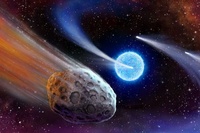
Roseta finds comet plume powered from deep below
October 26, 2017
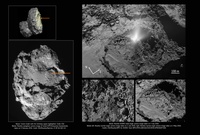
Comet mission reveals 'missing link' in our understanding of planet formation
October 25, 2017
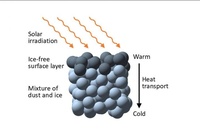
ALMA and Rosetta detect Freon-40 in space
October 03, 2017
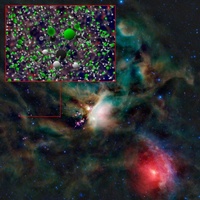
Observations made with the Atacama Large Millimeter/submillimeter Array (ALMA) and ESA's Rosetta mission, have revealed the presence of the organohalogen Freon-40 in gas around both an infant star and a comet. Organohalogens are formed by organic processes on Earth, but this is the first ever detection of them in interstellar space. This discovery suggests that organohalogens may not be as good markers of life as had been hoped, but that they may be significant components of the material from which planets form.
Unexpected surprise: A final image from Rosetta
October 02, 2017
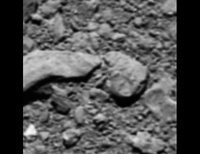
Farthest active inbound comet yet seen
September 29, 2017
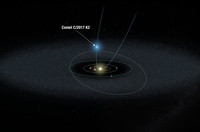
NASA's Hubble Space Telescope has photographed the farthest active inbound comet ever seen, at a whopping distance of 1.5 billion miles from the Sun (beyond Saturn's orbit). Slightly warmed by the remote Sun, it has already begun to develop an 80,000-mile-wide fuzzy cloud of dust, called a coma, enveloping a tiny, solid nucleus of frozen gas and dust. These observations represent the earliest signs of activity ever seen from a comet entering the solar system's planetary zone for the first time.
Unique type of object discovered in our solar system
September 21, 2017
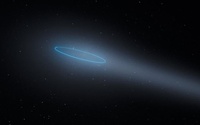
Astronomers have observed the intriguing characteristics of an unusual type of object in the asteroid belt between Mars and Jupiter: two asteroids orbiting each other and exhibiting comet-like features, including a bright coma and a long tail. This is the first known binary asteroid also classified as a comet.
The return of the comet-like exoplanet
September 15, 2017

Astronomers have focused the Hubble Space Telescope on an exoplanet that had already been seen losing its atmosphere, which forms an enormous cloud of hydrogen, giving the planet the appearance of a giant comet. During earlier observations, it was not possible to cover the whole cloud, whose shape was predicted by numerical simulations. Thanks to these new observations, the scientists have finally been able to confirm the initial predictions.
Does the organic material of comets predate our solar system?
September 12, 2017
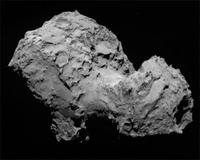
Large, distant comets more common than previously thought
July 26, 2017
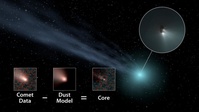
There are about seven times more long-period comets measuring at least 1 kilometer across than previously predicted, suggests new research. The researchers also found that long-period comets are, on average, nearly twice as large as 'Jupiter family' comets, whose orbits are shaped by Jupiter's gravity and have periods of less than 20 years.
Bizarro comet challenging researchers
July 07, 2017
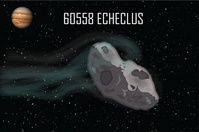
Scientists pursue research through observation, experimentation and modeling. They strive for all of these pieces to fit together, but sometimes finding the unexpected is even more exciting. That's what happened recently to a researcher who studies comets, asteroids and planetary formation and was part of a team that published a study focused on the comet 174P/Echeclus. It didn't behave the way the team was expecting.
New tool for CCD photometry - tutorial
June 27, 2017
CCD photometry of comet still remains as a very difficult work, especially for most wanted total coma magnitudes, compatible with visual observations. Also the usual problem is creating of proper ICQ coded line of observation. To help observers with this, I programmed an application - tool for comet observers, which is now in testing - beta phase.
New Comet: C/2017 K4 (ATLAS)
June 06, 2017

CBET nr. 4397, issued on 2017, June 01, announces the discovery of a comet (magnitude ~17) by the "Asteroid Terrestrial-impact Last Alert System" (ATLAS) Team on CCD exposures taken on May 26.5 with the ATLAS 0.5-m f/2.0 Schmidt telescope at Haleakala. The new comet has been designated C/2017 K4 (ATLAS).